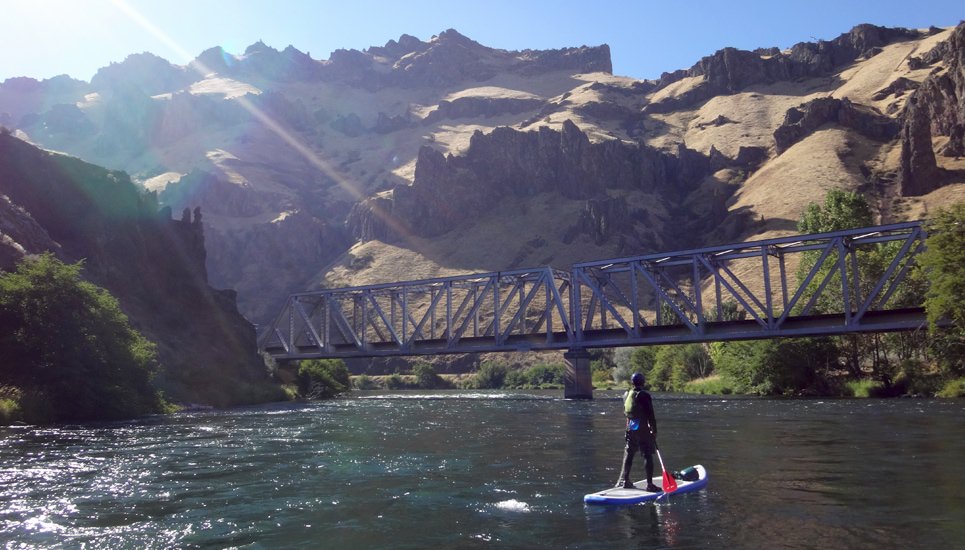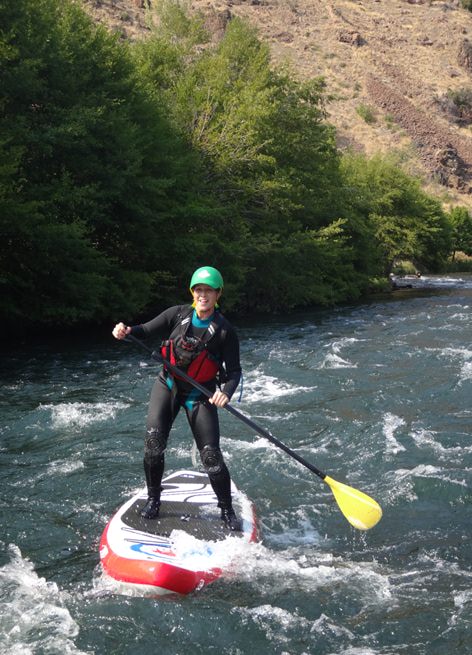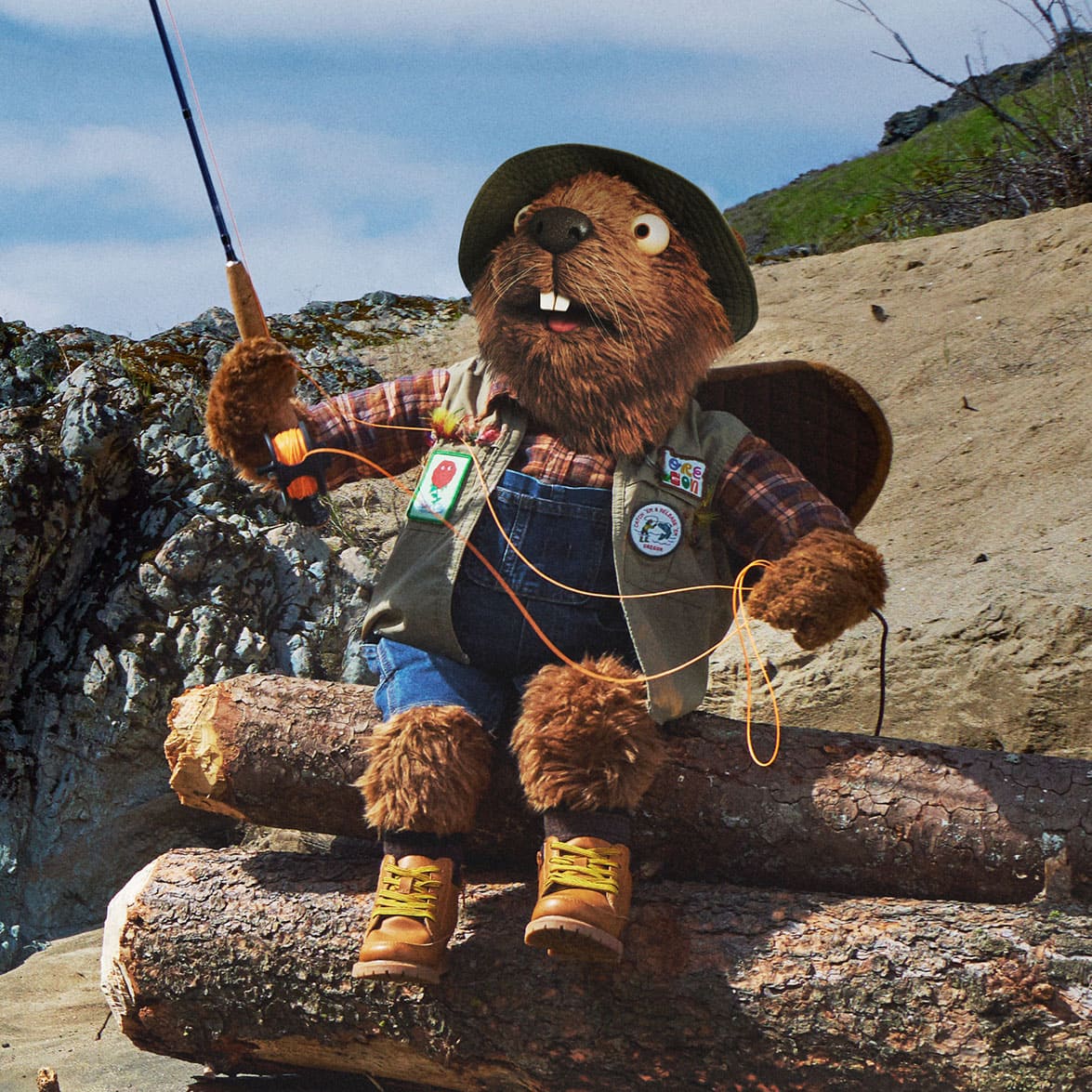
My legs shook as I used a long, one-bladed paddle to push my stand-up paddleboard (SUP) away from shore. I engaged my core, bent my knees and kept my board at a 45-degree angle to the current. “Remember, look where you want to go,” said Tim Thornton, owner of River Drifters and one of our guides. That’s easier said than done — at least for me.
I’m not a “water person.” I prefer high alpine hikes on Mt. Hood, long trail runs in the Columbia River Gorge and mountain biking in Central Oregon over surfing, sailing, kiteboarding or kayaking. So how did I end up on a three-day whitewater SUP trip? Peer pressure.
Tempted by amazing scenery and time spent with girlfriends, it didn’t take much for my friend Heidi to sell me on the idea of a trip on the Lower Deschutes River, a Wild and Scenic River (one of 48 in Oregon) that flows from Little Lava Lake to the Columbia River and carves an expansive canyon through the desert.
So there I stood, carefully trying to keep my balance as I dug into the water with my paddle. I took two strokes, lost it and topped into the river. A waist leash attached me to my inflatable board and a wetsuit provided some protection from pointy rocks. I used the technique Tim had demonstrated just minutes before to climb back onto my board: Go from stomach to kneeling to standing. He made it look so easy.
I eventually regained my balance but splashed into the water a couple more times as I ferried across the river. When I finally made it to the other side, the rest of the group looked at me with beaming smiles. “This is gonna be awesome, right?” said Meredith, a snowboarder friend who seemed at ease on her SUP.
I can’t say I agreed with her, but then I’m not the type to say no to an adventure.

Lessons to Learn
With a paddler-to-guide ratio of two-to-one and 50 miles of Class I, II and III rapids, our guides assured us there would be plenty of opportunities to master paddling techniques, eddy turns and wave surfing. As a newbie, I was a little apprehensive.
This particular River Drifters SUP trip began at Trout Creek, which is about 40 miles from the town of Maupin. Here, Tim and his co-leader, Shion, gave us a safety talk and demonstrated basic SUP paddling techniques while a third guide, Caleb, secured to our support raft food, camping gear, an inflatable kayak, extra paddles, a first-aid kit and other essentials.
As we navigated beyond calmer waters to bigger rapids, our guides beautifully demonstrated how to relax, bend your knees, look ahead and glide over the rocks and waves. One by one we followed their lead, and one by one we dropped to our knees and fell into the water. We paddled onward — at times like graceful swans and at others like fumbling ducks — maneuvering through ripples and into eddies.
At a few points during my first day, my legs would tire and I’d just glide with the current, soaking in my surroundings and watching for wildlife. Once I saw an osprey sitting high above the riverbank in a huge nest — a rare sight this late in the summer. Oregon’s scenery can thrill as much as any rapids.
Later on, in the heat of the afternoon, we began scoping out camping sites and found a peaceful sandy beach with plenty of space to spread out. Our guides treated us to a freshly cooked meal of soup, salad and burritos, which we devoured while recounting the day’s journey. Satisfied and exhausted, I fell fast asleep in my tent shortly after sunset.
Testing the Rapids
Fast-forward to day three. After two days of playing in rapids and getting used to navigating my own vessel, I felt strong, confident and brave. Tim and Shion had taught us all we needed to know to safely navigate the rapids ahead — Wapinitia and Boxcar, two well-known Class III rapids with big wave trains.
As we approached Boxcar, Shion paddled into an eddy, where he planned to wait for us to regroup before powering into the rapid. Heidi went first and gracefully maneuvered her SUP downriver to join Shion. The rest of my comrades did the same. Easy. Now it was my turn.
My heart pounded as I took a few slow, powerful strokes and paddled harder to make the eddy turn. But I lost my balance and found myself barreling toward Boxcar. I locked eyes with Shion who quickly paddled in front of me and coached me back onto my board. With seconds to spare, I lifted my belly onto the SUP, jolted to my knees and dug my paddle into the water. In less than 10 seconds, it was all over. I made it through the wave train.
Holy crap!” I yelled to Shion. “Did I really just do that?” With new appreciation for the word “rapid,” I marveled at how the situation went from mellow to scary and back to mellow in a matter of minutes.
We watched as the rest of the group, one by one, ran the rapid unscathed. I cheered, “Way to go ladies!” The river was starting to change this dry-land-loving gal.
Know Before You Go
River Drifters is the only rafting company offering three-day whitewater SUP trips on the Lower Deschutes River. The trips run in September and include all SUPs, paddles, helmets, PFDs, wetsuits, camping gear (tents, sleeping bags and pads), dry bags, food, shuttles and permits. Participants need to be in very good physical condition and be somewhat adventurous.
“Watching people gain confidence and skills is the best part of whitewater SUP trips,” says River Drifters owner and guide Tim Thornton, who grew up in Bend. “Unlike rafting trips, it’s really up to the individual to make it as challenging as they want it to be. And they can do that on the Deschutes knowing they are in a very safe arena.”
